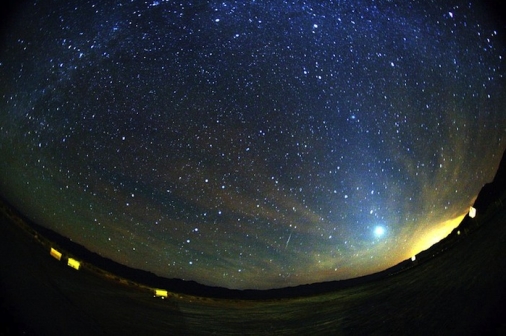
The Perseids meteor shower 2013 will begin to start to light up the skies tonight.
The meteors will be peaking on August 12, but shooting fireballs can still be seen tonight. Up to 60 meteorites can be viewed per hour this year, according to NASA. The absence of moonshine means that observers can get the best view between August 11 and 13.
BEST TIME TO VIEW:
The optimal viewing time is in the predawn hours. The shooting stars will be visible until early Tuesday morning. Viewing will be limited before midnight, so observers are advised to view the stars later in the evening.
For the best view of the meteor shower, head out from the city and into a rural area and look up.
The Marshall Space Flight Center will be hosting a live online chat on August 11, between 11 p.m. to 3 a.m. ET. Questions will be answered before the meteor shower peaks.
This year's falling star show will be extra special, as the moon will be a crescent moon, making the skies extra dark.
The Perseid meteor shower occurs in July and August as the earth orbits through the debris of the Swift-Tuttle comet. Chucks of debris - rocks made of iron-nickel and other minerals - gets pulled into the earth from our planet's gravity, which turns into balls of hot gas when entering Earth's atmosphere.
The meteors entering the earth when darkness falls come from the constellation Perseus.
On August 12, when the meteor shower peaks at its brightest, over a hundred shooting stars, or "falling stars" will be seen per hour.
According to EarthSky, the Perseids strengthen in number as the night deepens into midnight and "typically produce the most meteors in the wee hours before dawn."
The best way to view the meteor showers is to drive to a place without any city lights. No special equipment is required to view the meteor shower.
This year's star show is all the more special because the crescent moon, Jupiter and Venus will align together just as the Perseids peak. According to NASA, "The alignment occurs in the eastern sky before sunrise on the three mornings of highest meteor activity."
The meteors entering into Earth are tiny, some as small as a grain of sand, but they are traveling at speeds of up to 160,000mph, which creates a "train or tail" when entering Earth's atmosphere.
The Perseids have been observed by star-gazers for over 2,000 years and is referred to as the 'tears of St. Lawrence' by some Catholics.













